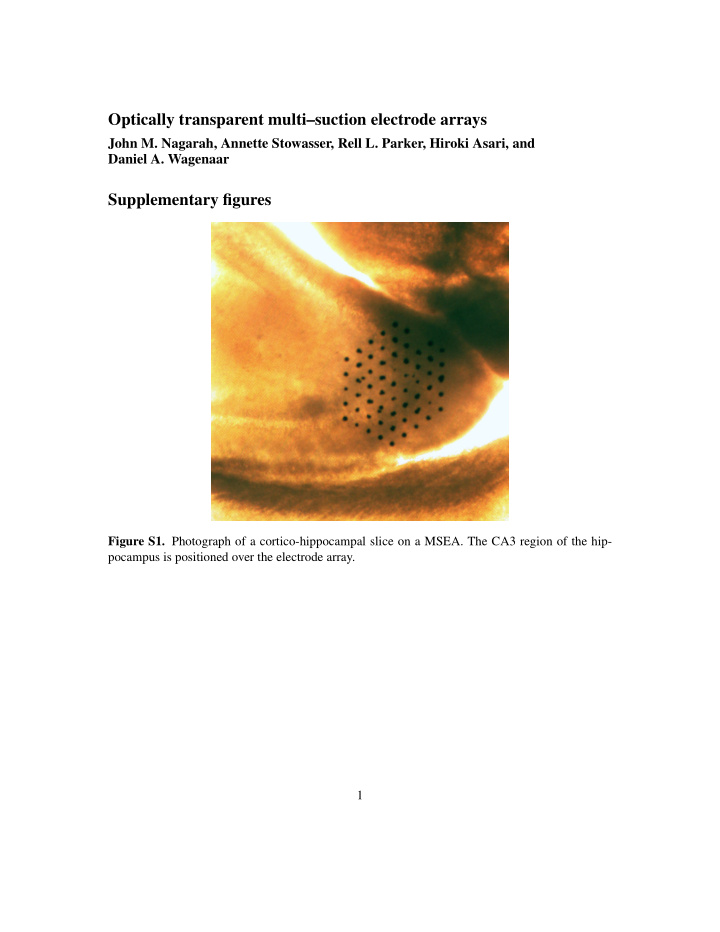



Optically transparent multi–suction electrode arrays John M. Nagarah, Annette Stowasser, Rell L. Parker, Hiroki Asari, and Daniel A. Wagenaar Supplementary figures Figure S1. Photograph of a cortico-hippocampal slice on a MSEA. The CA3 region of the hip- pocampus is positioned over the electrode array. 1
Figure S2. Recording spontaneous activity from cortico-hippocampal slices with an MSEA with a circumferential electrode design. A. Simultaneously recorded traces from 60 electrodes before (left) and after (right) application of 120 mbar of suction. Each trace represents data from one electrode; traces in the graph are laid out in the same geometry as electrodes in the array. Colors only serve to guide the eye. B. Heat map of firing rates on each of 30 electrodes (sorted in order of total spike count) with and without suction. Suction was applied 5 minutes after the start of the recording (green marks). C. Example from a single electrode of the waveforms of all spikes. Colors: units as identified by UltraMegaSort2000 (see Online Methods). 2
Figure S3. SEM image of a fixed leech ganglion. Glial membrane can be seen draping over neurons in the leech ganglion after desheathing. 3
Recommend
More recommend